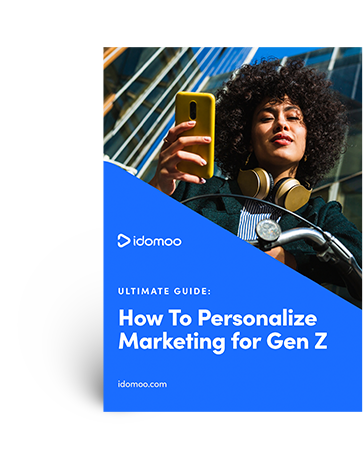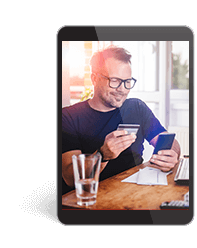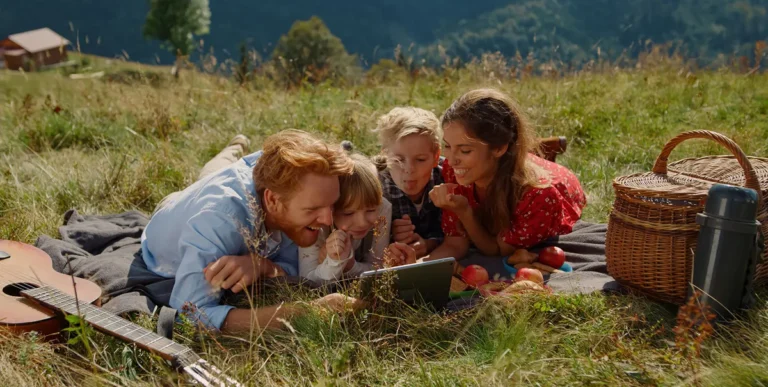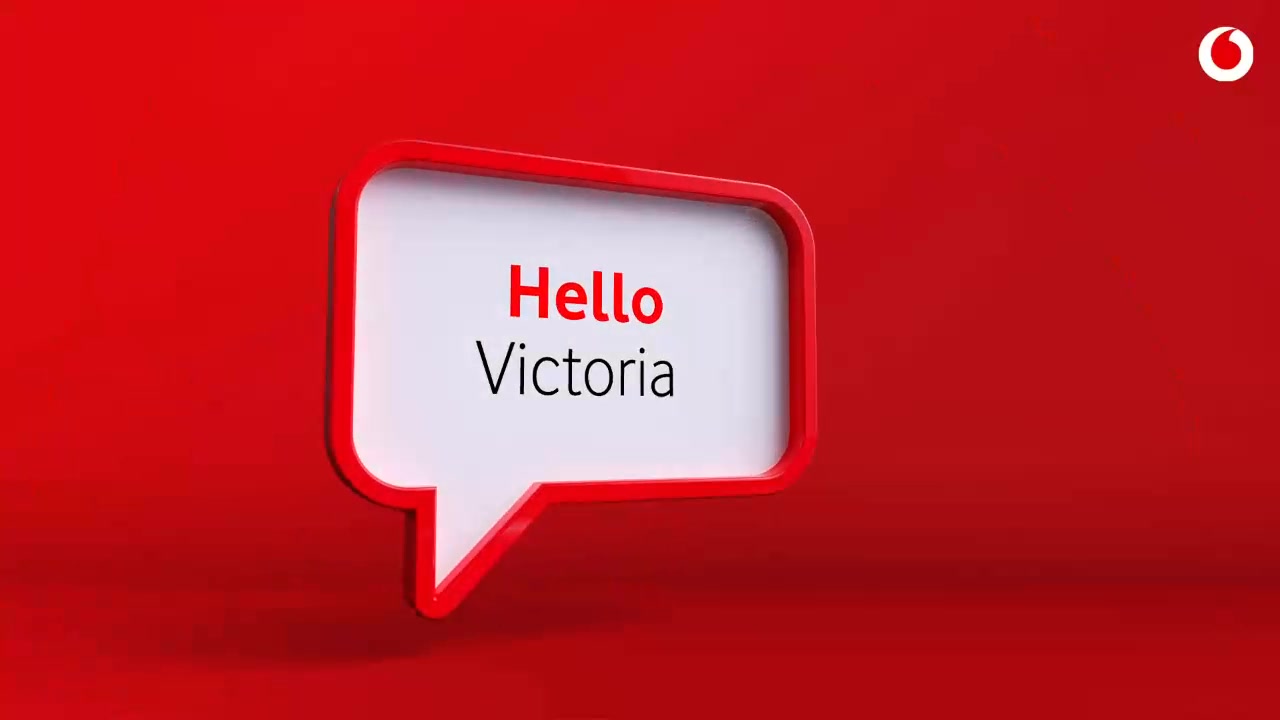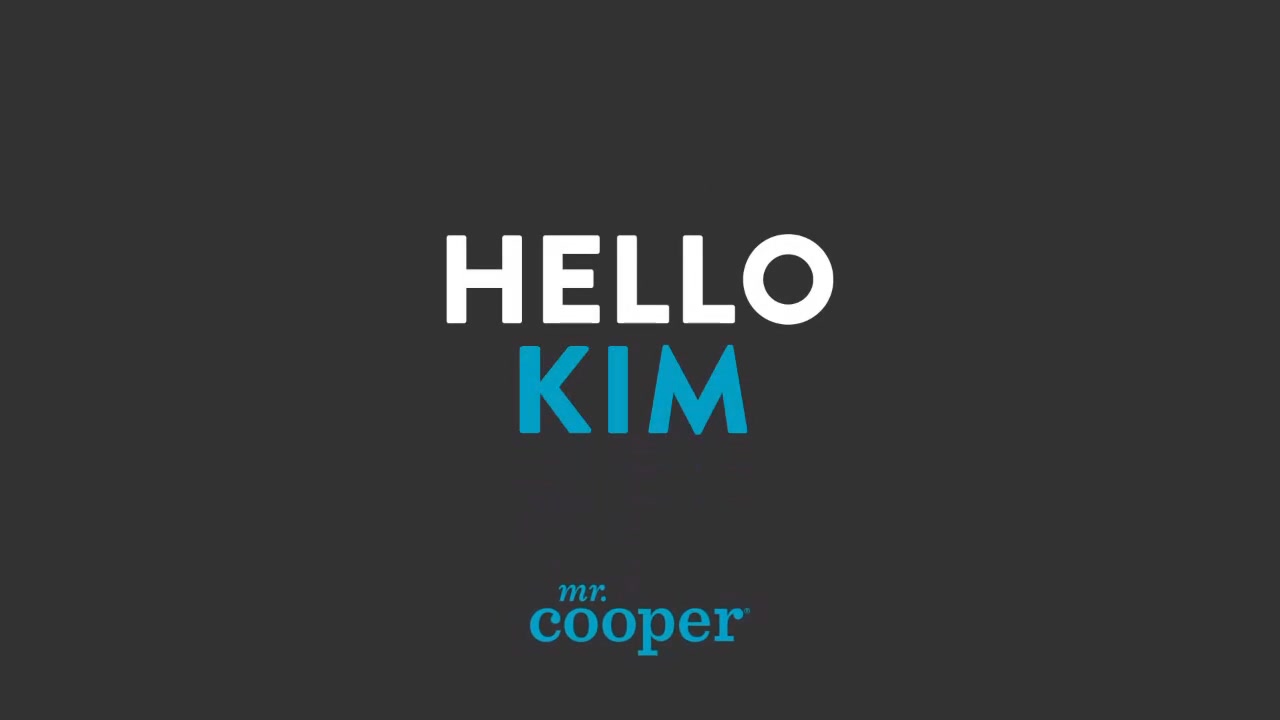Trying to boost sales? Personalization is a practical strategy that helps businesses stay relevant. Epsilon found that an overwhelming majority of consumers (90%) find personalization appealing, with 80% more likely to do business with a company that offers personalized experiences.
Buyers are more sophisticated now. Rather than one-and-done transactional relationships, they expect a personalized experience where brands treat them like the unique individuals they are. The days of generic messages and mass marketing are over. With competition growing in every industry, personalization has become a necessity for businesses to connect with their target audience.
There’s an interesting reason behind why personalization is effective. According to research on the subject, it’s powerful because it appeals to two things:
- Our innate desire for control
- Our need to cope with the information overload of the 21st century
When brands personalize their sales and marketing efforts, they are providing more than just standardized options. They are affirming their customer’s uniqueness and presenting personal choices. At the same time, those personalization efforts help break through the information overload by being personally relevant to each customer.
Imagine it — sales content that’s exciting instead of forgettable. That’s what personalizing the sales process can do. By adding personal touches to their sales efforts, businesses can strengthen their relationship with their customers, improve conversion rates, encourage loyalty and, ultimately, drive business growth.
To help you get started, we’re diving into the importance of personalization and providing practical ideas for implementing various personalization strategies. Let’s explore the power of personalization in sales together.
What Is Personalization?
Put simply, personalization is when a brand tailors experiences or content to individual users based on their preferences, behaviors, or other details. This can be as simple as having email marketing campaigns include each customer’s name in the subject line or as complex as using algorithms to recommend products based on past purchases.
Driven by data, personalization allows you to provide your customers with a brand experience that’s tailored to their preferences and relevant to their needs. This has made it an incredibly effective marketing tool for businesses looking to optimize their sales funnel.
Why Does Personalization Matter?
Personalization in sales matters more now than ever before. According to McKinsey, personalization can increase revenues by up to 15% and increase the efficiency of marketing spend by up to 30%. The reason is simple: customers are no longer satisfied with one-size-fits-all solutions.
A recent survey of 5,000 consumers found that 71% think personalization matters. On top of that, 80% are willing to share data in exchange for deals and offers, indicating that personalization can be especially powerful in sales.
Post on
When you take the time to understand your customers’ needs, it sends the message that you value them as an individual and care about solving their unique pain points. Personalization nurtures the customer relationship, making them feel seen and heard, which can lead to increased loyalty and repeat business.
Additionally, crafting personalized experiences can help you stand out in a crowd of competitors. By leveraging customer data, you can deliver a more meaningful and memorable experience. In today’s world, where customers are bombarded with sales messages and advertisements, being authentic and relevant can make all the difference.
To sum it up, personalization matters in sales because it can drive revenue growth, strengthen your connection with your customers and help you stand out from the competition. It’s a powerful strategy that can make the sales process more effective, efficient and even enjoyable for all involved.
What Kind of Data Does Personalization Use?
Effective personalization requires businesses to proactively gather and analyze data about their customers. Here are some of the types of data that are commonly collected and used for personalization efforts.
- Demographic data: Basic information about customers such as age, gender, income, occupation, location and education level can be used to personalize marketing messages, offers and promotions.
- Behavioral data: Behavioral data tracks the customer’s interactions with the brand, including their purchase history, browsing history and search history. This data can be used to send personalized product recommendations and marketing campaigns that match what they’ve shown interest in.
- Psychographic data: Psychographic data measures the customer’s values, attitudes, interests and lifestyles. Think of these as attributes related to an individual’s personality. This information can be used to personalize the tone and messaging of a campaign.
- Social media data: Social media data tracks the customer’s interactions with the brand on social media platforms, which can be used to personalize interactions based on the customer’s social media activity. For example, a makeup retailer could send a special discount to a customer who tags them on Instagram.
- Geographic data: Geographic data tracks the customer’s location. It can be used to tailor messaging based on the customer’s location, such as an airline sending a personalized email about low-cost flights departing out of a customer’s local airport.
Overall, businesses will need to collect various types of data to effectively personalize the customer experience. By leveraging this data, businesses can create tailored marketing messages, promotions and offers that resonate with their customers and lead to increased loyalty and repeat business.
Making Sales Content Interactive
The power of personalization is further enhanced with interactivity.
Capture your customer’s attention, establish a personal connection, and then lead them to take action by adding elements that turn them into engaged consumers.
There are loads of ways you can add interactive elements for your customers, from quizzes that help them find their perfect product to interactive product demos.
Interactive Video lets you bring these engaging elements into the internet’s most popular medium. Check out how you can learn more or even shop directly from the video below by clicking on the shoes you’re interested in.
Now, imagine a similar video that addresses each viewer by name and is filled with personalized recommendations based on their past buying behavior. Products can be integrated into the scene. Scenes can change based on who is watching. You can even add gamification elements to drive deeper engagement.
Best of all, the customer can easily click to purchase, significantly streamlining their buyer journey.
Personalization in Retail Sales and Beyond
As the example above shows, retail is one industry where personalization really shines. Personalized Video, in particular, can effectively improve online shopping by bringing a human element to the experience. Think video reviews and demonstrations from store associates and experts versus static images and text descriptions.
But, of course, retail is far from the only industry that stands to profit from personalization. From insurance to higher ed, we’ve seen companies across most industries use video personalization to increase sales.
Take a look at some results from past campaigns.
- Banking: 9x increase in conversions
- Travel: 5x uplift in revenue
- Gaming: 68% increase in sales
- Telecommunications: 3x phone upgrades
Watch below to see one example from the world of banking. Getting a personalized offer like this isn’t only relevant — it’s a moment that can surprise and delight a new customer. That’s the magic of Personalized Video.
More importantly, personalizing your sales efforts is well worth the investment. The ROI of personalization has been studied, calculated and evaluated from various angles. The verdict is clear: when you personalize, you see significant returns.
When To Add That Personal Touch
Think about your customer’s buying journey. Which points of contact can be more engaging, relevant and, well, human? From the interest stage to the final sale, here are just a few ideas for you to personalize your customer interactions and boost the effectiveness of your sales strategy.
Right at the Start: Personalization for Customer Acquisition
You know what they say about a first impression. The first few times you connect with a potential or new customer set the tone for the rest of the relationship.
Adding personalization to your acquisition efforts is a surefire way to capture the attention of potential customers. Imagine browsing an ecommerce site where you’re signed in and seeing an informative video with your name on it! You’ll probably pay closer attention, right?
Living Video makes this possible with its ability to draw from first- and third-party data feeds. It can adapt based on the viewer’s context, such as their location, device or even the weather.
Living Video also lets users input their own data. This can be used for social sharing UGC campaigns — think about a resort that lets you create a branded highlights reel with your vacation photos. But it also can be used for sales. Send customers a personalized offer that they can update based on their needs.
Check out the mortgage calculator example below for a glimpse of how this works.
Tip: This kind of video can be great for lead generation. Put it on your website and gather contact information so you can follow up with potential customers.
By allowing customers to actively participate, you can use their input to enrich your first-party data and deliver a more relevant experience while still respecting the customer’s privacy.
Personalize Communications and Interactions
Another prime opportunity to add personalization is when potential buyers reach out to you for more information. In this stage, customers are actively seeking help and evaluating options, so providing personalized assistance and resources can make all the difference.
For example, don’t just send a generic sales email to those requesting more information. Ask for their name and why they’re interested. Then, send a personalized message that highlights the most relevant features. This ensures your information is helpful and demonstrates that your business understands their unique challenges and is willing to go the extra mile to help.
Personalizing your outreach communications and interactions in the evaluation stage can also involve following up with the customer at key touchpoints in the process. Sending a personalized follow-up after a demo or sales call can show the customer that you are invested in their success and are committed to providing the support they need.
That follow-up can take many forms. You might do an individual call — the most personal touchpoint but often not scalable. You could send a text-based follow-up, usually via email or SMS. Or you might do a video as this insurance quote follow-up shows.
An effective sales follow-up needs to be:
- personalized
- automated
- succinct
- engaging
The video above hits all those points in around a minute.
By providing tailored resources and following up, you can effectively demonstrate your business’s commitment to the customer and provide a personalized experience that sets you apart from everyone else.
Seal the Deal With Personalized Offers
As your relationship with your customers develops and you learn more about them, you can then start to leverage their information to craft personalized offers that are relevant and appealing. By adapting your offers to their interests and behavior, you can increase the likelihood of a sale and build a deeper connection with the customer.
The personalized offer below is a great example from the travel industry. Knowing their customer already enjoyed a trip with them, the cruise company leveraged that into an offer tailored to that customer’s needs and preferences.
Even better, they presented it in a video that had a real person explaining the proposal and the next steps in the process, further humanizing the message and connection between the brand and their customer.
Another way to personalize offers is to use demographic and psychographic data to develop detailed customer profiles and create targeted campaigns. Does a customer have young kids? Maybe throw in a family discount as an incentive. Got an environmentally conscious client? Highlight the sustainable aspects of your brand in your offer.
Carefully consider who your customer is when crafting offers and you’ll not only show that your business understands and respects their lifestyle, but you’ll also create a sense of exclusivity and camaraderie with your customer.
Finally, let’s not forget that when can be almost as important as what. You also can leverage data to send personalized offers that are timely. By analyzing customer behavior and purchase history, you can identify the best time to offer a discount or promotion. Maybe a customer has had a product sitting in their cart for a few days. Close the sale by sending them a personalized offer that convinces them to make that purchase.
By using customer information to create attractive, personalized offers, you can stand out from the noise of all those generic, irrelevant promotions your customers hear all the time.
Similarly, once you’ve landed a new customer, you can make sure their onboarding experience keeps that same personal tone.
Don’t just put them through a boring, generic introduction. Include their unique details and make sure that the content is customized for them.
Upselling, Cross-Selling and Renewals
The sales process doesn’t stop once you’ve made a sale. Upselling, cross-selling, and renewals are essential strategies for increasing revenue and boosting customer lifetime value. By leveraging the wealth of customer data available to your business, you can identify opportunities to offer additional products or services to your existing customers.
When you personalize, you show your customers that you know them and their interests. This personalization inspires trust and leads to your customers having confidence in what you share and recommend to them.
Personalization, then, is critical to upselling and cross-selling efforts. When you recognize your customers as unique and demonstrate that you understand their tastes, your customers become much more likely to respond favorably to your sales campaigns.
One way to do this is to analyze customer purchase history and identify products or services that are frequently purchased together or in the same time frame. By identifying complementary products that add value to the customer’s experience, you can increase the likelihood of an upsell or cross-sell.
And because you know your customers, you can reach out at the right time. This is key for renewals and upgrade opportunities. To keep your customers coming back, you need to strengthen and emphasize that personal relationship. As you ask them to renew, show that you value them as an individual and that you’ve thoughtfully considered how you benefit their life.
For example, O2’s recontracting campaign addressed the customer by name, even mentioning their February trip to Spain (among other data points).
Here’s another use case. If someone recently took out a loan to buy a new car, they probably also need to update their car insurance soon, which presents a perfect cross-selling opportunity for a company that offers both. See how KBC seized that opportunity with the Personalized Video below.
While selling closely-related products is always ideal, don’t worry if an obvious connection isn’t there. Instead, focus on making sure that you promote relevant and appropriate products or services to the customer.
Sending your banking customers a message about the benefits they’d receive by taking out a personal loan with you makes sense. Promoting the latest gas-guzzling pick-up truck to a customer that’s only ever purchased your electric cars? Not so much.
Upselling, cross-selling, and renewals have long been popular tactics for increasing revenue and customer lifetime value. Through personalization, you can offer additional value to your existing customers that’ll keep them coming back for more and boost your bottom line.
Personalized Countdowns to Discounts, Deals and More
Most points of contact with your customers can benefit from adding personal touches, but personalizing your offers can have a huge effect on your bottom line.
People like to feel special. When you present an offer as just for them — and add details that demonstrate that — they become more inclined to accept it.
When it comes to offers, discounts and deals, adding countdowns is a popular strategy to create a sense of urgency. Remember when we talked about Living Video updating based on context? This is where it gets fun.
Try incorporating a countdown into your video for a more immersive experience. You can send out countdown videos that update in real time based on when they’re viewed. Add to that, the video can address the customer by name, recommend their favorite product (based on past behavior) and include interactive CTAs to purchase, and this tactic is a powerhouse for driving sales.
Tip: Personalized offers don’t have to be as complex as a video if you still want visual impact. Personalized GIFs can work great if you want a quick way to spotlight a new product, loyalty rewards available, a special discount and more.
The Science Behind the Sale
Personalization works. Beyond being a popular buzzword, it’s a research-backed strategy that is rooted in social psychology. And when you combine personalization with video, you’ve got the ultimate combo. Engaging and dynamic, video is becoming the go-to solution for brands looking to create a standout user experience. Our own clients have seen some pretty impressive results, including 3x higher upgrades and 8x higher sales.
And it’s not the only thing that can drive your customers to make the sales decisions you want. Learn more about the role that cognitive biases play in customers’ decision-making in our free webinar, Feels True: The Secret Psychology of Sales. Plus, you’ll get clued in on 34 (!) tricks to help you boost conversions.
Click the button below to talk with someone one-on-one.
